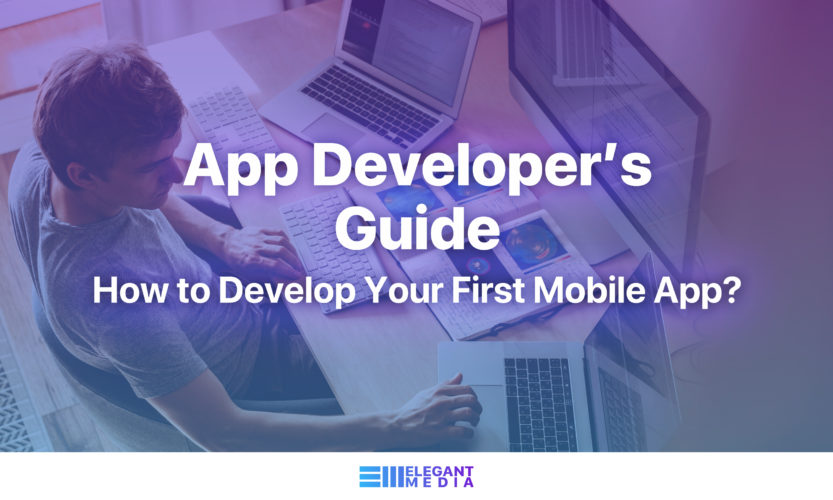Great ideas come to all of us every once in a while. It is our responsibility to act on them and make the most out of a brainwave. However, there are times that you need some outside help. Imagine waking up one early morning and having this great concept for a mobile application. Chances are that you, like me, would know little about the whole process of developing a mobile app. This app developer’s guide will help you to develop a mobile app without requiring any technical expertise whatsoever.
1. Define Concept/Goal or Target Problem Solution
This is one of the most important steps in your app building journey. If you can look around, find a problem/need and feel you can solve/meet it with your app, then you are on the right track. Once you are through this step you should be able to define your app’s purpose and target users very clearly.
Once this is done, you have to identify the key features that you will include in your app. You may feel that including a whole load of features at once in the app will be useful to the users, but even if this is the case, the initial development of the app will take a lot of time and resources. Remember that your app can have updates later on and only the most important features need to be on it initially.
2. Sketches
This is where you initially get into the designing phase of the app. Sketches mean exactly that. Sketching out layouts of screens using traditional methods such as pencil & paper or using the wide variety of software that exist for such purposes nowadays, you will have an idea of how you want the user to experience your app. This will also give you/developers a basic idea of how the user will navigate through the interfaces and features. This step also gives you an early base to build your interfaces on.
3. Research
Once your sketches are done and in order, you will need to conduct a research. This research should answer a number of important questions such as:
- What does the user require?
- What are the core features you will implement?
- Has anyone else developed a similar app?
- If so, how can your app be better?
- How can you gain revenue from your app?
Once you have answered these questions, you will have an idea of what exactly needs to be in the initial release of the app. Once you have all this noted down it is time to move on to the next stage.
4. Create a wireframe (prototype)
This is where development officially begins. There are two ways to go about this. One is the long route which involves you learning to code/develop which may seem time consuming initially but is an impressive and in-demand skill these days. The other is to hire an app development company which has an impressive portfolio and good testimonials. This is a faster means of getting your app out on the market and considerably decreases the work you have to do forth of this step.
If you are intending to do it yourself there are numerous software that will help you develop a wireframe that makes this process considerable easier. The most basic wireframe usually involves a basic user’s journey through the intended interfaces of the app whilst the more complex prototypes involve proper functionality of the app to a certain degree.
5. Test prototype
Once the prototype is done, comes the testing stage. It’s a good idea to get feedback from people who weren’t involved in the development stages by asking them to test out your model. Since this is usually not a major technical stage, you can ask your friends and family to help you here by getting there feedback and whether they feel that the app would provide any tangible or intangible value. Ease of navigation, user-friendliness and features are some aspects of the app that can be greatly improved via this process.
6. Build Backend
Once testing of the prototype is done you can go on to develop the backend and integrate it with your now functional interfaces. This is a lengthy process and one of utmost importance as this ensures seamless functioning of the app. Most of the coding of the project is done during this stage and it is usually advisable to let someone experienced be involved to at least a certain degree if you are building the backend as an inexperienced developer
7. Design individual screens (skins)
This importance of this design process cannot be stressed enough. As most app users will testify, an app that looks good is most likely to succeed than an app that has excellent features but is not pleasing to the eye. A good design goes a long way when you are considering marketing your app and in turn looking to generate revenue from it. Lots of thought & creativity is required for executing the design perfectly, as in most cases the design single-handedly decides whether the app is going to go a long way or not.
8. Test, Modify App.
Now that you have your designs and back-end all integrated together, it is time to test the app again to see that it is indeed what you set out to develop in the first place. This stage is crucial in finding out those bugs that you did not notice during development, all those little typos existing in the text and non-working buttons. This stage takes time and it should rightly so as this is the last stage where you get to notice and fix all the issues and add the final touches to your app so it looks professional and presentable to the public.
9. Release
It is time to release the app now onto the respective app stores. Each store has its special set of guidelines to be followed before it can be submitted to the respective store. Make sure you have followed specified guidelines and you’re all set to release your app to the public. This is also where you get to decide whether you want to offer your app for free or charge users per download. Make sure that in the scenario that you do charge per download, the cost of the app is justifiable. Remember sometimes a lot of purchases for a small charge may prove to be more fruitful than a few high charge purchases.
10. App Marketing
This is an important phase that should begin sometime before the final version of the app is released to the public and which continues indefinitely. Use social media and the Internet to build up hype about the app. Depending on your marketing budget, you can take help of other means of advertising such as Press Releases, Commercials and Paid Advertisement. Doing this will ensure that you gain gain maximum exposure for your app and which increases downloads and thus the user base. Having a website for your app also gains quite a lot of exposure and helps spread the word around.
11. IMPROVE
Do not stop now that you have a successful app out there. Remember all those minor features you deemed unnecessary during the initial development phase of the app. Now is the time to offer them to your users via updates. This can possibly increase the worth of your app and help you continued feedback and publicity for your app.






